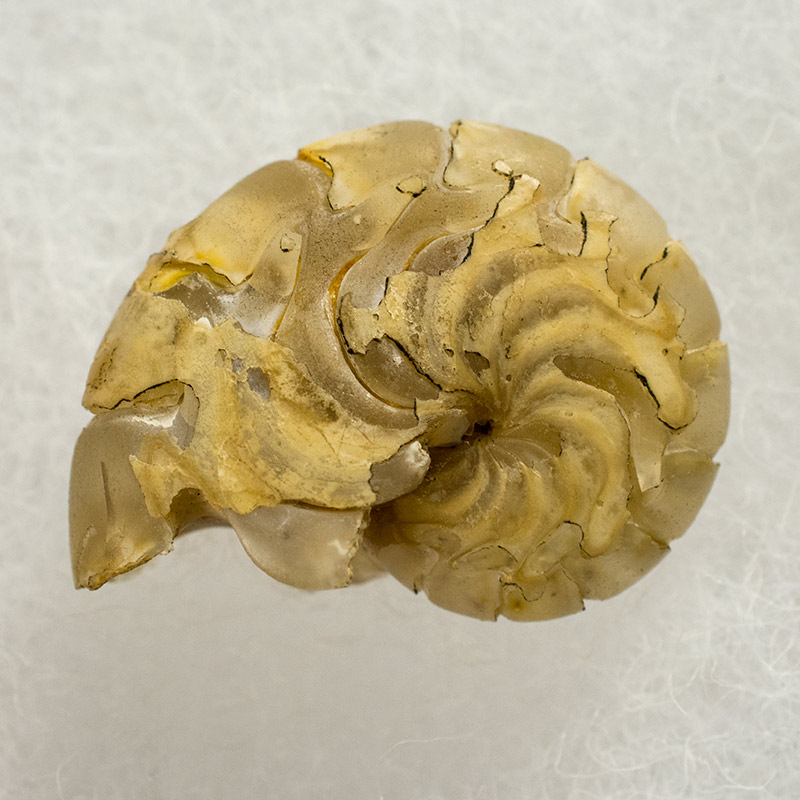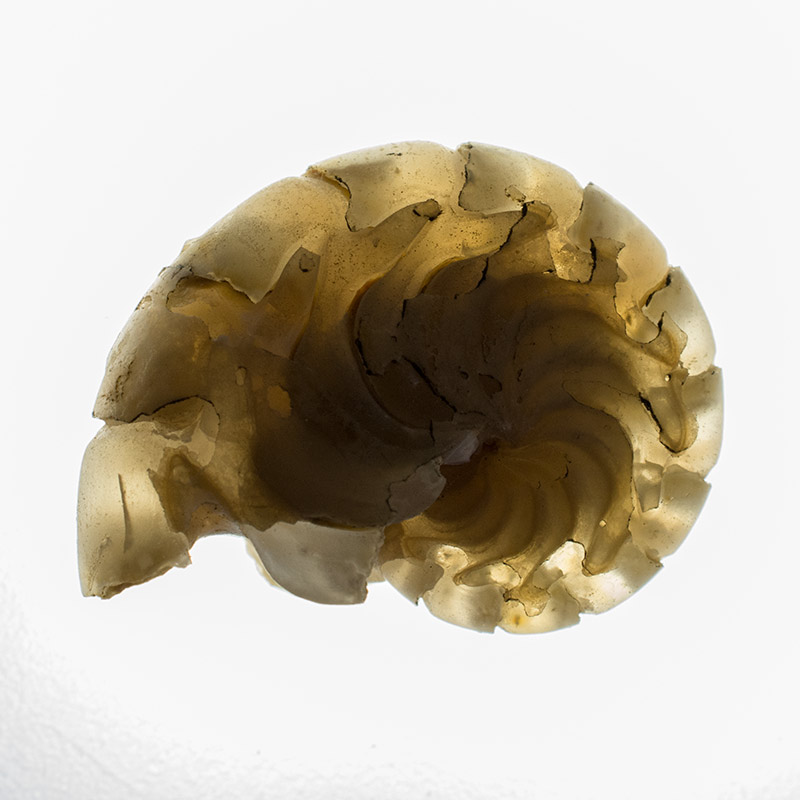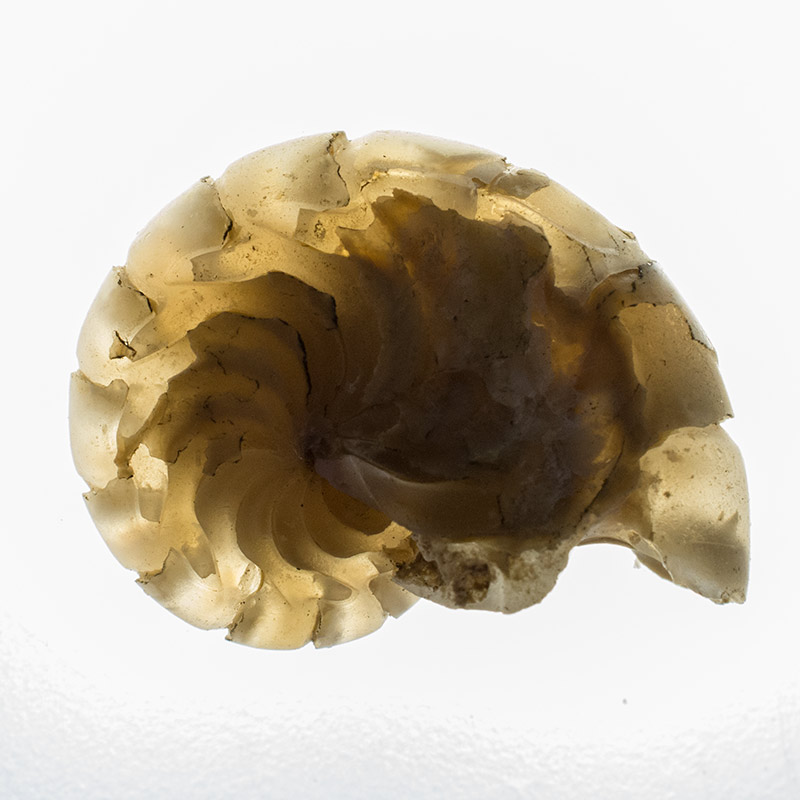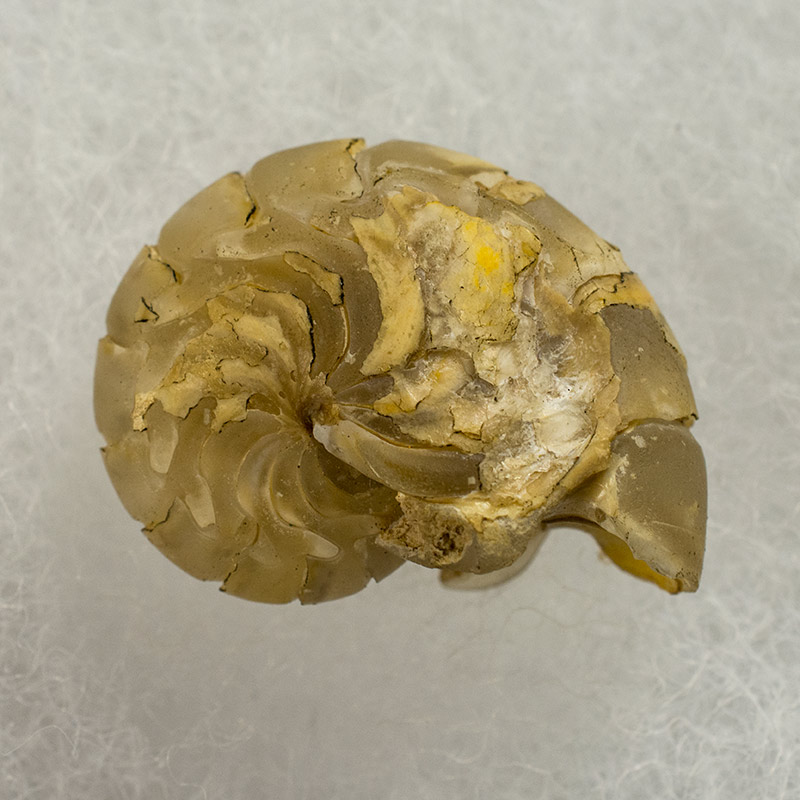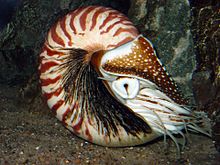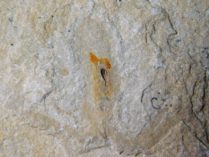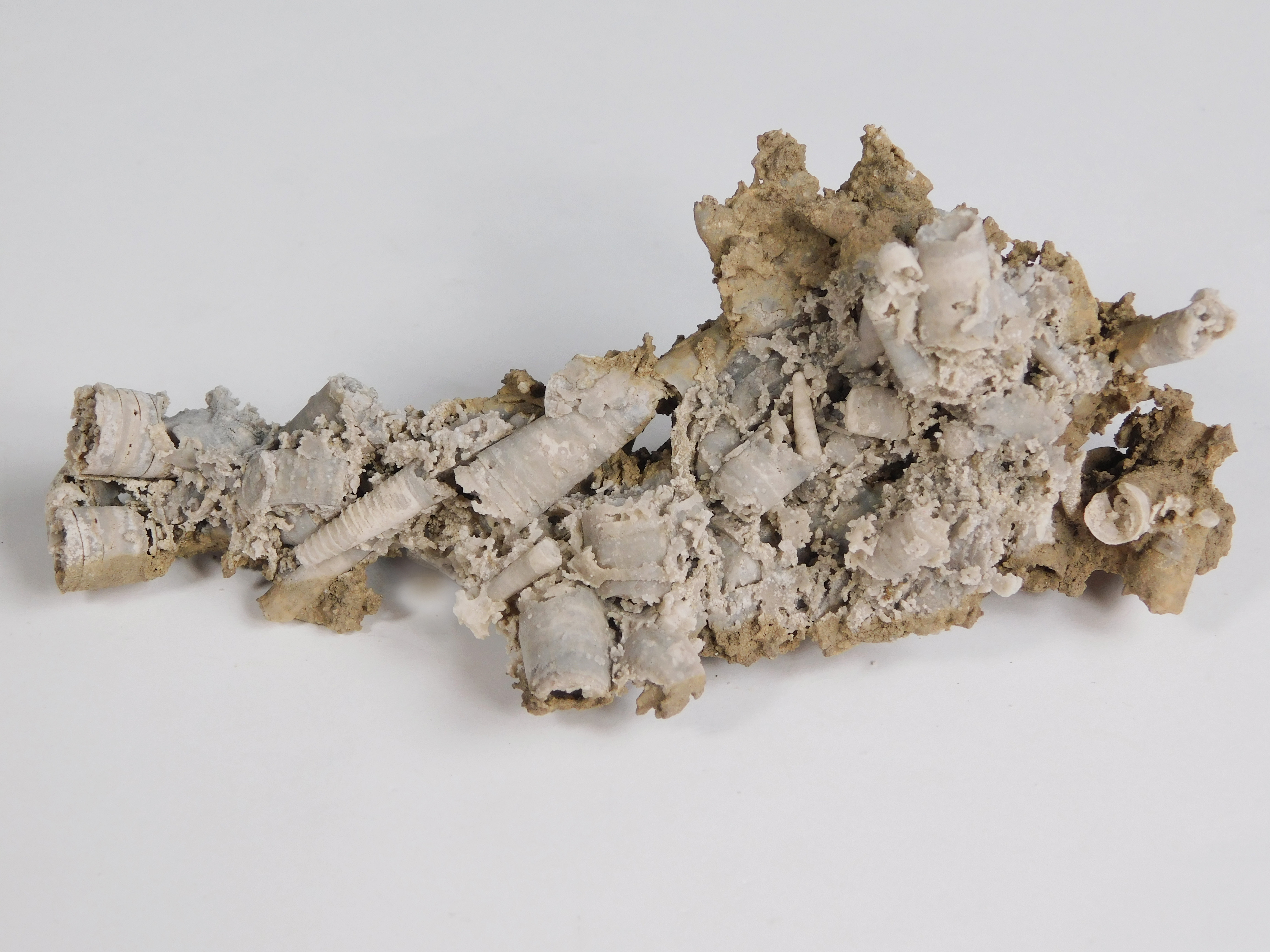Description
Miocene
Lincoln Creek Formation
Grays Harbor County, WA, USA
Extremely rare complete 22mm nautiloid preserved in translucent chalcedony
Nautiloid, Cephalopod.
Aturia is a Paleocene-Miocene nautiloid genus known from sites worldwide especially in Eocene and Miocene deposits.
Nautiloids flourished during the Ordovician Period when they constituted the dominant predatory animals and developed an extraordinary diversity of shell shapes and sizes. Approximately 2,500 species of fossil nautiloids are known but only a handful of species survive to the present day.
When you look at the surface of the shell, sutures (or suture lines) are visible as a series of narrow wavy lines and they appear where each septum contacts the wall of the outer shell. The sutures of nautiloids are simple in shape, being either straight or slightly curved. This distinguishes them from the “zigzag” sutures of goniatites and the highly complex sutures of ammonites.
Chalcedony replacement sometimes offers a level of translucence to a fossil. It’s a preservational artifact rarely seen.

